Address: Ximen Industrial Area, Huangyan, Taizhou, Zhejiang, China
Attn: Jenny
TEL: +86-576-81116176
FAX: +86-576-81116175
Mobile: +86-15958619969
WhatsApp:+86-15958619969
SKYPE: yuzhizhang1
E-mail: jenny@zhilianmould.com
Attn: Jenny
TEL: +86-576-81116176
FAX: +86-576-81116175
Mobile: +86-15958619969
WhatsApp:+86-15958619969
SKYPE: yuzhizhang1
E-mail: jenny@zhilianmould.com
Injection Molding
Injection Molding
Injection molding (Injection moulding) is a manufacturing process for producing parts from both thermoplastic and thermosetting plastic materials. Material is fed into a heated barrel, mixed, and forced into a mold cavity where it cools and hardens to the configuration of the cavity. After a product is designed, usually by an industrial designer or an engineer, molds are made by a moldmaker (or toolmaker) from metal, usually either steel or aluminum, and precision-machined to form the features of the desired part. Injection molding is widely used for manufacturing a variety of parts, from the smallest component to entire body panels of cars.
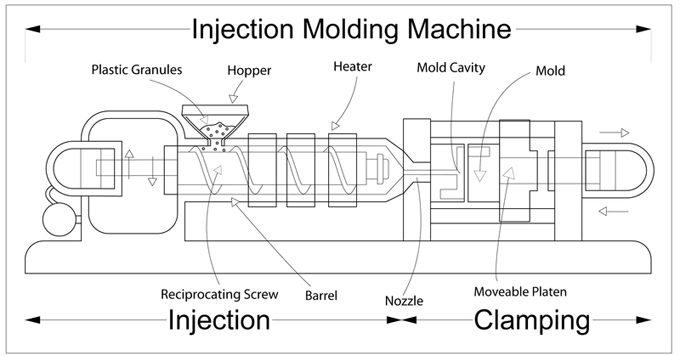

Injection process
With injection molding, granular plastic is fed by gravity from a hopper into a heated barrel. As the granules are slowly moved forward by a screw-type plunger, the plastic is forced into a heated chamber, where it is melted. As the plunger advances, the melted plastic is forced through a nozzle that rests against the mold, allowing it to enter the mold cavity through a gate and runner system. The mold remains cold so the plastic solidifies almost as soon as the mold is filled.
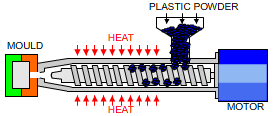
1. Granules of plastic powder (note the plastics listed above) are poured or fed into a hopper which stores it until it is needed.
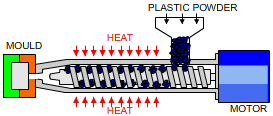
2. A heater heats up the tube and when it reaches a high temperature a screw thread starts turning.
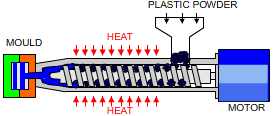
3. A motor turns a thread which pushes the granules along the heater section which melts then into a liquid. The liquid is forced into a mould where it cools into the shape (in this case a DVD storage unit).
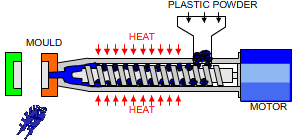
4. The mould then opens and the unit is removed.


